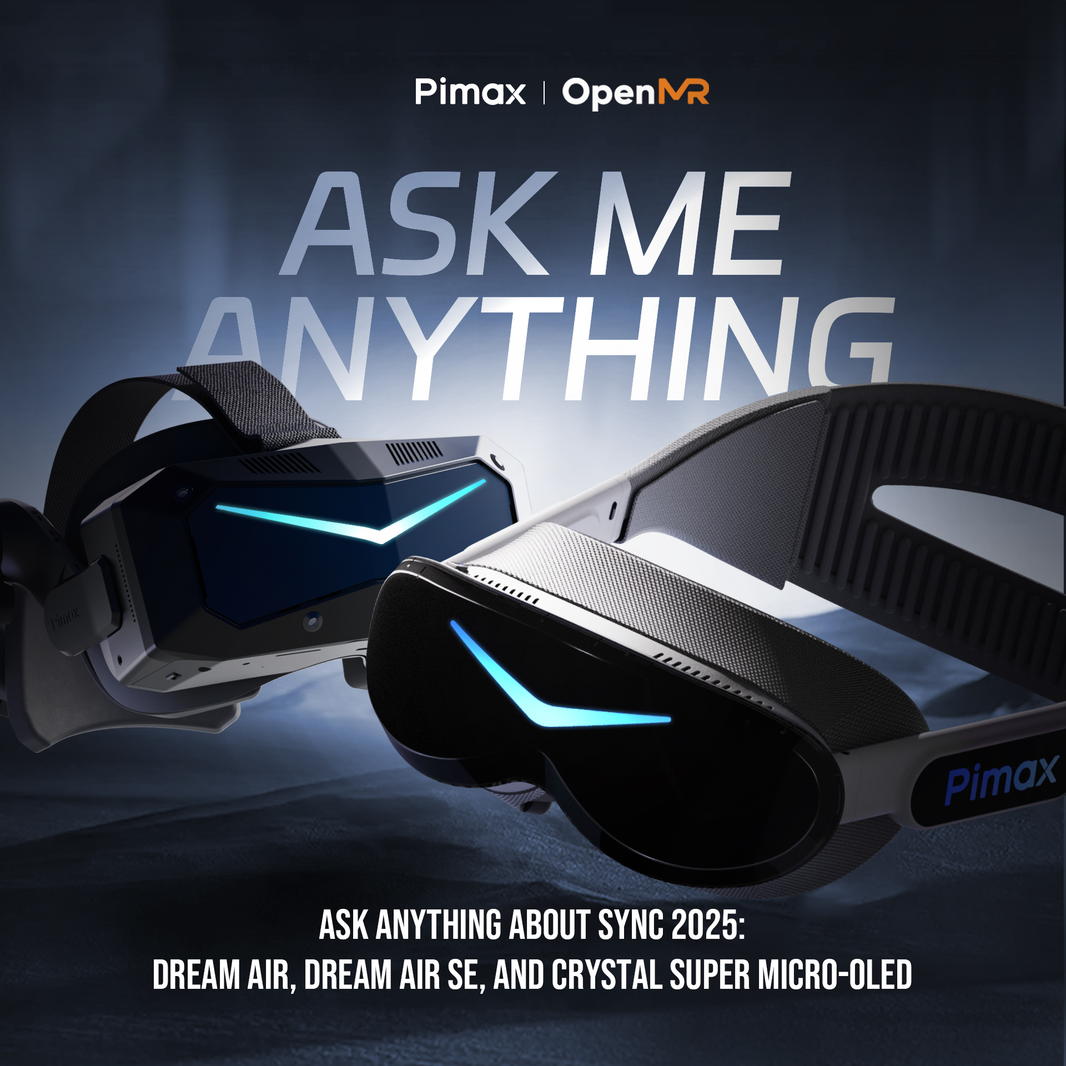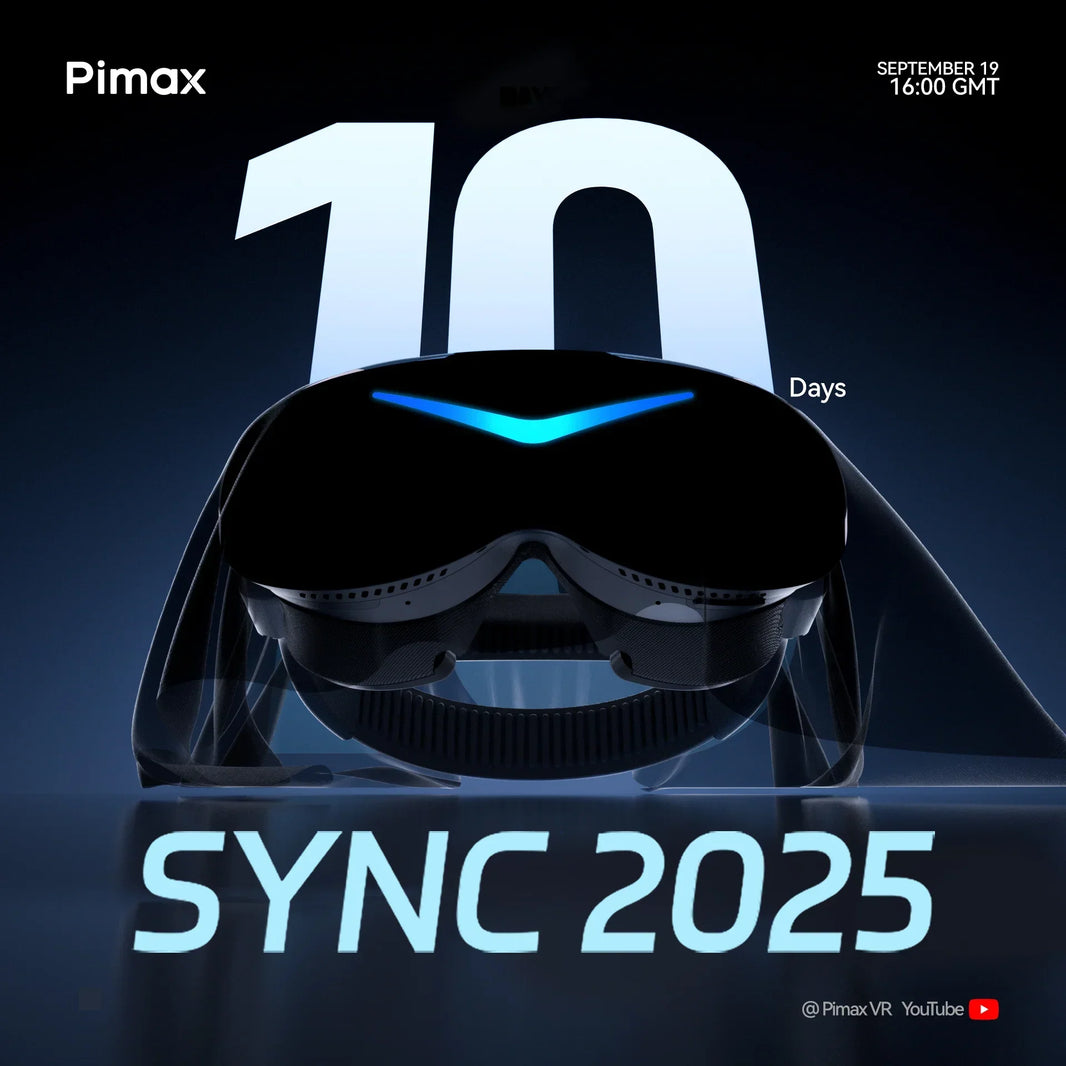Introduction
My!
It's Gene.
I'm known for not giving any preference to anyone, and I honestly evaluate products that I've actually used and found to be good. That's why I've been praised by manufacturers and the general public for my reliability, and this review of a particular product is one such example.

Technology continues to evolve day by day.
It's been about a year since the first Pimax Crystal was released. I've used almost all of the previous Pimax series, but the Pimax Crystal was another model that demonstrated high performance that was more than two steps ahead of other products.

The prices of high-spec VR for commercial use (including military use) are shockingly high, with some costing well over 1 million yen. At the current stage, 8K image quality is top class, and there are not many manufacturers that offer it for commercial use.

My first encounter with the brand "Pimax," which continues to release products at a price range accessible to the general public, was with the original Pimax 4K. Before that, I had used the HTC Vive, but VR at the time normally had screen doors (black lattice-like element patterns), and the image quality was far from perfect, with time lags in the accuracy of head direction detection and small shaking, which made for an unpleasant feeling of motion sickness.
However, Pimax 4K was even more beautiful than its numerical specifications suggested, and it made a huge impact at the time.
Since then, I have owned and used the Pimax 5K Plus, Pimax 5K SUPER, Pimax 8K plus, and Pimax 8KX as they have evolved.




There has been remarkable progress, even compared to the last five years or so, with 5K-class VR becoming the norm, and there are standalone (operating independently) devices like metaQuest, mixed reality (combined with reality), and Apple's mixed reality headset " Vision Pro ." MR is primarily used for a different purpose than what is commonly referred to as VR, and the style of use is completely different in the "simulator" field, which is where I mainly work, so I will not be discussing it here.
Well, I'm finally ready to write a review of this product, the " Pimax Crystal Light. "
Having experienced the original Pimax Crystal, I initially thought "I don't need the Light," but it turned out that while I thought it would be a "cheaper version with the same performance" as the original Crystal, it was actually not, and was developed as a "PCVR that inherits the good parts."

The original Crystal was designed with standalone VR in mind, with the battery mounted on the back, but at first glance, its cool and stylish design and imposing Gundam -like appearance made a huge impact. I've tried out any VR on the market that caught my interest, but I've always imagined that the more powerful the VR, the more imposing and heavy it becomes! So when I actually held the original Crystal in my hands, I remember thinking, "That's about right," that it wasn't heavy at all, and was lighter than I'd imagined. I'd expected the image quality to be better than the native dual 4K of the Pimax 8K X, which was the highest quality at the time, but the original Crystal's ultra-high-performance VR produced such vivid images that it was like a completely different beast.
When it comes to VR image processing, it's usually a style that depends on the specs of the gaming PC itself, and that's the way it is with most other companies' VRs, but Pimax Crystal supports image processing on the VR itself, so it's not as heavy to operate as you might imagine, and in fact it even feels like it supports and raises the "weight" on the PC.
Let's do a little recap here.
Amazing! That said, the price is so high that it's unrealistic for the average user to think that it's out of reach, and it seems that Pimax wants to deliver the best product to the average market at the lowest possible price.
Pimax Crystal Light
Pimax Crystal Light is an ultra-high-performance VR device that has been designed with Crystal in mind for PCVR. Unlike standalone VR, PCVR is a technology that utilizes the processing power and rendering capabilities of the PC to create a virtual reality experience.

Therefore, a cable will be connected to the console, but with the recent advancements in ultra-low latency wireless technology, I think it's possible that this will be implemented someday, as long as costs allow. However, personally, I'm a "wired" fan for now, because wireless environments, including Wi-Fi, can become unstable if there are any drawbacks. I don't think cables are particularly in the way when playing simulators (lol).
This is amazing! Part 1First of all, the visuals are as vivid and fresh as ever, with a truly realistic feel.
8K ultra-high resolution and glass aspherical lenses deliver crystal clear images.

This is also beneficial when using the simulator, and even on the PC desktop screen, it looks glossier than when looking at a regular high-resolution monitor, so even when not using the simulator, it might be nice to watch movies on the screen~♥ (lol)

Pimax's tool software used to be something called "Pit tool," but around the time the first Crystal was released, it was renamed to an application called "Pimax Play."
This is not a big change from the previous tool, but it is better to use Pimax than the old Pit tool. The speed at which the HMD is recognized seems extremely fast. Of course, the detection of the hand controllers is also very smooth, and since the Pimax Crystal Light also uses an inside-out tracking method for the device itself, it feels like both devices are improving accuracy.
The inside-out tracking method is, simply put, a technology that has become popular in the HMD market recently. In recent VR, it has the advantages of "simplicity," "spatial recognition," and "hand controller detection," and is a "VR" that provides auxiliary spatial recognition. Insideout is a simplified version of the "station (Pimax uses a Vive base)" that is placed in the corner of a room and accurately detects the movements of each part of the body with high precision even when you move around the room!
Of course, the Pimax Crystal Light is no exception and can use the InsideOut tracking method, but using a Vive Base Station like I do allows for more reliable, accurate, and stress-free detection, so I use both the station and the InsideOut tracking method. Using a station does incur a small purchase cost, but I personally believe it is essential if you want to create a perfect, satisfying environment.


One small weakness of the inside-out tracking method is that when the room is dimly lit and the amount of spatial information entering the lens is reduced, the detection can become off, but this Vive base compensates for this.
If you're aiming for a high-end VR environment, this is a must-have.
You can also add more Vive bases later (two diagonally).
This is amazing! Part 3The sound quality has improved dramatically
In previous models, Pimax used stylishly designed headphones called KDMAS and DMAS, but with the Pimax Crystal Light they have adopted a completely different design.

These are called open-type special mini headphones, but I've used various VR headsets in the past, and these have one of the best sound quality I've ever heard. The bass is punchy and produces a powerful sound.
Personally, I like to turn up the volume super high and play while banging away, but generally speaking, turning up the volume too much can have health implications and lead to hearing loss, so it seems that all manufacturers draw the line in this area.

It is possible to change to other speakers as an option with Pimax, but I personally think the sound quality of these standard speakers is very good and highly recommend them.
This is amazing! Part 4First and foremost, it's lightweight! It's 310g lighter. But it's not just lighter; the front and rear balance has been redesigned to reduce fatigue during long periods of work. It's designed to handle a wide range of movements, from small to large.

It uses a new rendering technology that mimics the human eye and renders at the center of the line of sight, reducing the burden on the GPU and resulting in smooth, beautiful images.
The naked eye is positioned in the center of the lens, and you look around from there, but it feels very natural, with no sense of blurring or smearing at all, and an incredibly clear field of vision jumps into your eyes.

When I held the camera through the VR lens to take a picture, the outer edges would sometimes become slightly blurred, but I think this control was at work.
I felt that this technology was correcting the fact that my gaming PC was running unexpectedly smoothly.
This is amazing! Part 5First of all, prices have become incredibly cheap. Until recently, ultra-high performance VR would have cost under 300,000 yen, but now you can get it for under 180,000 yen.
I believe that the best time to buy is when you want it, so I haven't really thought about it, but Pimax sometimes runs limited-time campaigns so that you can easily try it out, so it might be a good idea to choose the right timing to buy it.
Normally, this kind of ultra-high performance VR for commercial use would easily cost over 1 million yen, and just five years ago it was priced at around 270,000 yen, an astonishing price that would make you go "Whaaaat!?"

I won't go into the details, but high-definition VR that can be used without having to think about anything complicated has become commonplace these days.
Even if manufacturers push themselves too hard to achieve the top end, the number of players who own ultra-high-end gaming PCs is small, so this is a model that people who are a little closer to the mid-range class will be interested in using, and it is better to be able to control the load as lightly as possible.
With the HTC Vive Pro2, even though it's 5K-level VR, the control software is heavy and it sometimes feels heavier than I expected.
However, I would like to commend Pimax for developing and releasing this ultra-high performance VR, which has high image quality of 8K and moves surprisingly smoothly, at a speed faster than I had imagined.
As a Pimax brand, Pimax Crystal Light will be loved as a new shape that is different from past models.
Genesis gaming PC specs (reference)

AMD Ryzen9 7900X
nVidia RTX4070Ti 12G
32GB of DDR5 memory
M.2 SSD 2T (C drive)
When using VR, the only adjustments you need to make are SteamVR rendering resolution and in-game image quality settings.
🫛🍺( ¯꒳¯ )ᐝ
GenesisPlan_A@SimGarageGene
X: GenesisPlan_A@SimGarage~Genesis
Blog: GenesisPlanA's diary
Youtube: GenesisPlanA@SimGarage〜Gene Channel








